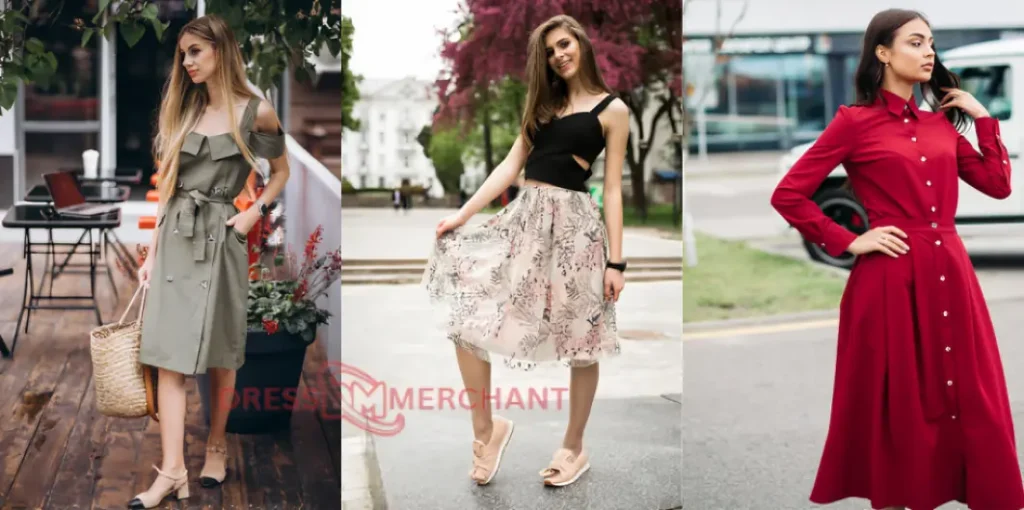Looking for the Best buying house for sustainable fashion sourcing in Bangladesh? We connect global brands with ethical manufacturers, ensuring eco-friendly materials and responsible production. Partner with us for transparent sourcing, premium quality, and sustainable solutions tailored to your fashion needs. Trust the Best buying house for sustainable fashion sourcing in Bangladesh to elevate your brand.
Thank you for reading this post, don't forget to subscribe!
1. Understanding the Role of a Buying House in Sustainable Fashion
1.1 The Definition and Core Functions of a Buying House
A buying house acts as an intermediary between international fashion brands and local manufacturers. It manages sourcing, quality control, compliance, and logistics to ensure products meet global standards. In sustainable fashion, buying houses play a critical role by identifying ethical factories, monitoring sustainable practices, and providing transparency throughout the supply chain.
1.2 How Buying Houses Drive Sustainability in the Fashion Supply Chain
Buying houses committed to sustainability enforce environmental and ethical standards at every production stage. They partner with factories using organic fabrics, water-saving technologies, and fair labor practices. By acting as sustainability watchdogs, they reduce the risk of greenwashing and guarantee brands access to truly eco-friendly products.
1.3 The Importance of Buying Houses in Bangladesh’s Fashion Export Industry
Bangladesh’s ready-made garment sector relies heavily on buying houses for international trade facilitation. Sustainable buying houses contribute not only to revenue but also to Bangladesh’s reputation as a responsible apparel hub. They foster collaboration between brands and ethical producers, helping Bangladesh climb the ranks of global sustainable fashion leaders.
1.4 Challenges Faced by Sustainable Buying Houses in Bangladesh
Despite their critical role, sustainable buying houses in Bangladesh face challenges like inconsistent factory compliance, rising raw material costs, and pressure from buyers for low prices. Addressing these challenges requires innovation, partnerships with NGOs, and alignment with international sustainability certifications.
2. Why Bangladesh is a Key Destination for Sustainable Fashion Sourcing
2.1 Overview of Bangladesh’s Textile Industry and Sustainability Transition
Bangladesh is the second-largest apparel exporter globally, with increasing focus on sustainability. Over 200 factories in the country are LEED-certified, leading the world in green garment production. This shift positions Bangladesh as a strategic location for brands seeking ethical, sustainable sourcing at competitive prices.
2.2 Availability of Sustainable Raw Materials and Eco-Friendly Processes
Bangladesh’s textile sector offers organic cotton, recycled polyester, and natural dyes sourced locally or regionally. Many mills and factories have adopted closed-loop water systems, renewable energy use, and zero-waste manufacturing, making sustainable sourcing more feasible and scalable in the country.
2.3 Government Policies and Incentives Supporting Sustainable Fashion
Bangladesh’s government has implemented policies promoting green practices in the textile sector, including incentives for eco-friendly upgrades, tax benefits for sustainable technology, and investment in renewable energy. These policies create an enabling environment for buying houses to offer sustainable sourcing solutions.
2.4 The Competitive Advantage of Bangladesh in Sustainable Fashion Sourcing
Bangladesh combines low production costs with rising sustainability credentials, giving brands a unique opportunity to meet both budgetary and ethical goals. Its workforce, infrastructure, and commitment to green manufacturing provide a distinct competitive edge in the global sustainable fashion marketplace.
3. Key Features of the Best Sustainable Fashion Buying House
3.1 Rigorous Supplier Evaluation and Factory Auditing
The best sustainable buying houses conduct comprehensive audits covering environmental, labor, and social criteria before onboarding suppliers. They verify certifications like GOTS, OEKO-TEX, Fair Trade, and ensure factories follow waste reduction and energy conservation protocols.
3.2 End-to-End Transparency and Traceability Systems
Leading buying houses utilize digital tools to track every step of production—from raw material sourcing to shipment. They provide clients with detailed reports, certifications, and real-time updates, enabling complete traceability and boosting consumer confidence in sustainable claims.
3.3 Dedicated Sustainability Advisory and Compliance Teams
Top-tier buying houses employ sustainability specialists who guide brands in material selection, production planning, and compliance with global standards. These teams help clients navigate complex sustainability frameworks such as Higg Index, ZDHC, and UN Sustainable Development Goals.
3.4 Customized Sustainable Product Development Capabilities
The best buying houses offer R&D services to co-create sustainable products, such as developing unique eco-friendly fabrics or designs optimized for recyclability. This innovation-oriented approach allows brands to differentiate their sustainable collections in a crowded marketplace.
4. Evaluating Sustainability Certifications in Bangladesh’s Fashion Industry
4.1 Global Sustainability Certifications and Their Relevance
Certifications like GOTS, Fair Trade, WRAP, BSCI, and SA8000 ensure ethical and sustainable practices across fashion supply chains. Buying houses must understand and monitor these standards to validate claims of sustainability for international clients.
4.2 The Rise of Local Green Certifications and Eco-Labels
In addition to global certifications, Bangladesh has developed local eco-labels encouraging responsible practices tailored to its context. Buying houses work closely with domestic certifying bodies to align with these emerging standards, ensuring localized sustainability benchmarks.
4.3 Challenges in Verifying Certification Authenticity
Certification fraud and non-compliance remain challenges in the textile sector. Top buying houses mitigate this risk by collaborating with independent auditing firms, conducting random checks, and maintaining a rigorous supplier verification process.
4.4 The Role of Certifications in Building Brand Trust
Certifications provide brands and consumers assurance that products meet sustainability claims. Buying houses leverage these credentials to enhance transparency, helping brands communicate verified sustainability stories to eco-conscious customers.
5. Sustainable Materials and Innovations Offered by Leading Buying Houses
5.1 Sourcing Organic and Regenerative Cotton in Bangladesh
Bangladesh’s cotton sector is shifting toward organic and regenerative farming methods. Sustainable buying houses collaborate with certified growers to source organic cotton with lower water use, pesticide elimination, and improved soil health benefits.
5.2 Embracing Recycled Fibers and Circular Fashion Materials
Leading buying houses source recycled polyester, nylon, and upcycled fabrics from certified suppliers. They support circular fashion by offering materials made from textile waste, PET bottles, and industrial scraps, reducing landfill and carbon emissions.
5.3 Innovations in Natural Dyes and Chemical-Free Processing
Some buying houses are pioneering partnerships with dye houses using plant-based, biodegradable dyes. They explore chemical-free finishing technologies, ensuring reduced water pollution, improved worker safety, and eco-friendly product aesthetics.
5.4 Promoting Low-Impact Washing and Finishing Techniques
Sustainable buying houses work with laundries implementing laser finishing, ozone washing, and enzyme treatments to minimize water, energy, and chemical use in garment finishing. These technologies align with sustainability goals without compromising design trends.
6. Building Ethical Supply Chains through Buying House Partnerships
6.1 Strengthening Labor Rights and Worker Welfare Programs
Buying houses committed to ethics require factories to provide living wages, safe working conditions, and grievance mechanisms. They monitor adherence to ILO conventions and push for continuous improvements in worker welfare programs.
6.2 Fostering Long-Term Supplier Relationships
Rather than chasing low prices, sustainable buying houses prioritize long-term partnerships with compliant factories. This approach fosters trust, quality improvement, and investments in sustainability by suppliers who feel secure in future orders.
6.3 Supporting Women’s Empowerment in Apparel Factories
Bangladesh’s garment sector employs millions of women. Sustainable buying houses champion gender equality by partnering with factories offering daycare, healthcare, leadership training, and anti-harassment policies that uplift women workers.
6.4 Enabling Local Community Development through Ethical Sourcing
Some buying houses extend sustainability efforts beyond factories by supporting community projects like education, clean water access, and health clinics in garment-producing regions, reinforcing their role in holistic ethical sourcing.
7. How Technology Enhances Sustainability Practices in Buying Houses
7.1 Implementing Blockchain for Supply Chain Transparency
Innovative buying houses deploy blockchain to create immutable records of sourcing, production, and logistics. This technology ensures tamper-proof traceability, enabling brands to verify every sustainability claim at each supply chain stage.
7.2 Utilizing Digital Sampling and 3D Virtual Prototyping
To reduce sampling waste, buying houses adopt 3D design tools and virtual sampling, allowing brands to approve prototypes digitally. This cuts fabric waste, energy, and logistics emissions linked to physical sample production and shipping.
7.3 Integrating AI and Data Analytics for Sustainability Metrics
Artificial intelligence helps buying houses forecast demand, optimize production schedules, and reduce overproduction. Data analytics track water, energy, and carbon footprints across suppliers, enabling smarter sustainability decisions.
7.4 Adopting ERP Systems for Efficient Resource Management
Enterprise Resource Planning (ERP) software helps buying houses streamline operations, reduce redundancies, and monitor sustainability KPIs across projects. This integration ensures sustainability is embedded in business workflows.
8. Case Studies of Successful Sustainable Sourcing via Buying Houses
8.1 A Global Brand’s Transition to Organic Cotton through a Bangladesh Buying House
A European fashion brand collaborated with a Bangladeshi buying house to transition 80% of its T-shirt line to organic cotton. The buying house secured certified suppliers, managed audits, and provided full traceability, enabling a successful sustainable product launch.
8.2 Reducing Water Footprint for Denim Production: A Buying House Initiative
A leading buying house implemented water-saving technologies across its denim supplier network, reducing water consumption by 40%. This initiative earned recognition from global sustainability platforms and attracted eco-conscious brands seeking low-impact denim sourcing.
8.3 Building a Circular Supply Chain for a Sustainable Capsule Collection
An international retailer partnered with a Bangladeshi buying house to develop a capsule collection using recycled fibers. The buying house coordinated material sourcing, factory training, and circular design consultations, resulting in a fully recyclable product line.
8.4 Empowering Women Artisans through Ethical Handloom Sourcing
A buying house facilitated sourcing from women-led handloom cooperatives in rural Bangladesh, connecting them to luxury fashion brands. This initiative preserved traditional crafts, provided fair income, and positioned the brand’s collection as ethically handcrafted.
9. Selecting the Right Sustainable Buying House in Bangladesh
9.1 Evaluating Track Records and Client Portfolios
Brands must assess a buying house’s past projects, client testimonials, and case studies to gauge their experience in sustainable sourcing. A solid track record with reputable brands signals reliability and expertise.
9.2 Assessing Supplier Networks and Certification Coverage
The buying house’s supplier network determines its capacity to meet diverse sustainability needs. Brands should verify how many suppliers are certified under global sustainability standards and what eco-friendly materials they offer.
9.3 Reviewing Operational Transparency and Reporting Practices
A buying house’s commitment to transparency reflects its sustainability integrity. Brands should request sample reports, audit summaries, and traceability documentation to evaluate reporting rigor and data accuracy.
9.4 Exploring Value-Added Services and Innovation Capabilities
Beyond basic sourcing, leading buying houses offer R&D support, trend analysis, and sustainability consulting. These value-added services enhance brand competitiveness and should factor into the selection process.
10. The Future of Sustainable Fashion Sourcing in Bangladesh
10.1 Scaling Sustainable Practices across the Supply Chain
Sustainable sourcing is evolving from niche to norm. Bangladesh’s buying houses are expanding green practices across their supplier base, scaling renewable energy, chemical management, and waste reduction across thousands of factories.
10.2 Embracing Circular Economy Models for Sustainable Growth
Forward-thinking buying houses are exploring circular economy models by integrating recycling, resale, and take-back schemes into sourcing strategies. This transition aligns with global shifts toward regenerative fashion systems.
10.3 Leveraging Industry Collaboration for Greater Impact
Collaboration among buying houses, brands, NGOs, and governments is crucial for tackling systemic challenges like carbon emissions, labor rights, and water scarcity. Bangladesh’s buying houses increasingly participate in multi-stakeholder initiatives to drive collective sustainability progress.
10.4 Positioning Bangladesh as a Global Leader in Sustainable Fashion
Bangladesh’s buying houses are not just participants but potential leaders in the global sustainable fashion movement. With continued investments in green technologies, certifications, and ethical sourcing, they are positioning the country as a beacon of responsible apparel manufacturing.
Conclusion: Best Buying House For Sustainable Fashion Sourcing In Bangladesh
Choosing the best buying house for sustainable fashion sourcing in Bangladesh is not just about finding a middleman—it’s about partnering with a visionary collaborator committed to ethical, environmental, and transparent practices. As the global fashion industry shifts toward sustainability, Bangladesh’s buying houses have stepped up with innovations in eco-friendly materials, cutting-edge technologies, robust compliance frameworks, and ethical supply chain management.
From securing organic and recycled fibers to enabling full traceability, from championing women’s empowerment to reducing environmental footprints, the right buying house integrates sustainability at every level. Their role extends beyond procurement—they become strategic partners helping brands navigate the complexities of sustainable fashion with confidence, integrity, and measurable impact.
As brands and consumers demand more responsible products, aligning with a sustainability-focused buying house in Bangladesh offers both ethical credibility and commercial advantage. By selecting a partner with proven expertise, certifications, innovation capabilities, and a commitment to continuous improvement, brands can future-proof their supply chains while contributing to a more equitable and sustainable fashion industry.
Bangladesh is not only a manufacturing powerhouse—it is emerging as a global leader in sustainable fashion sourcing. With the right buying house at your side, your brand can be part of this transformative journey toward a greener, fairer, and more sustainable fashion future.













